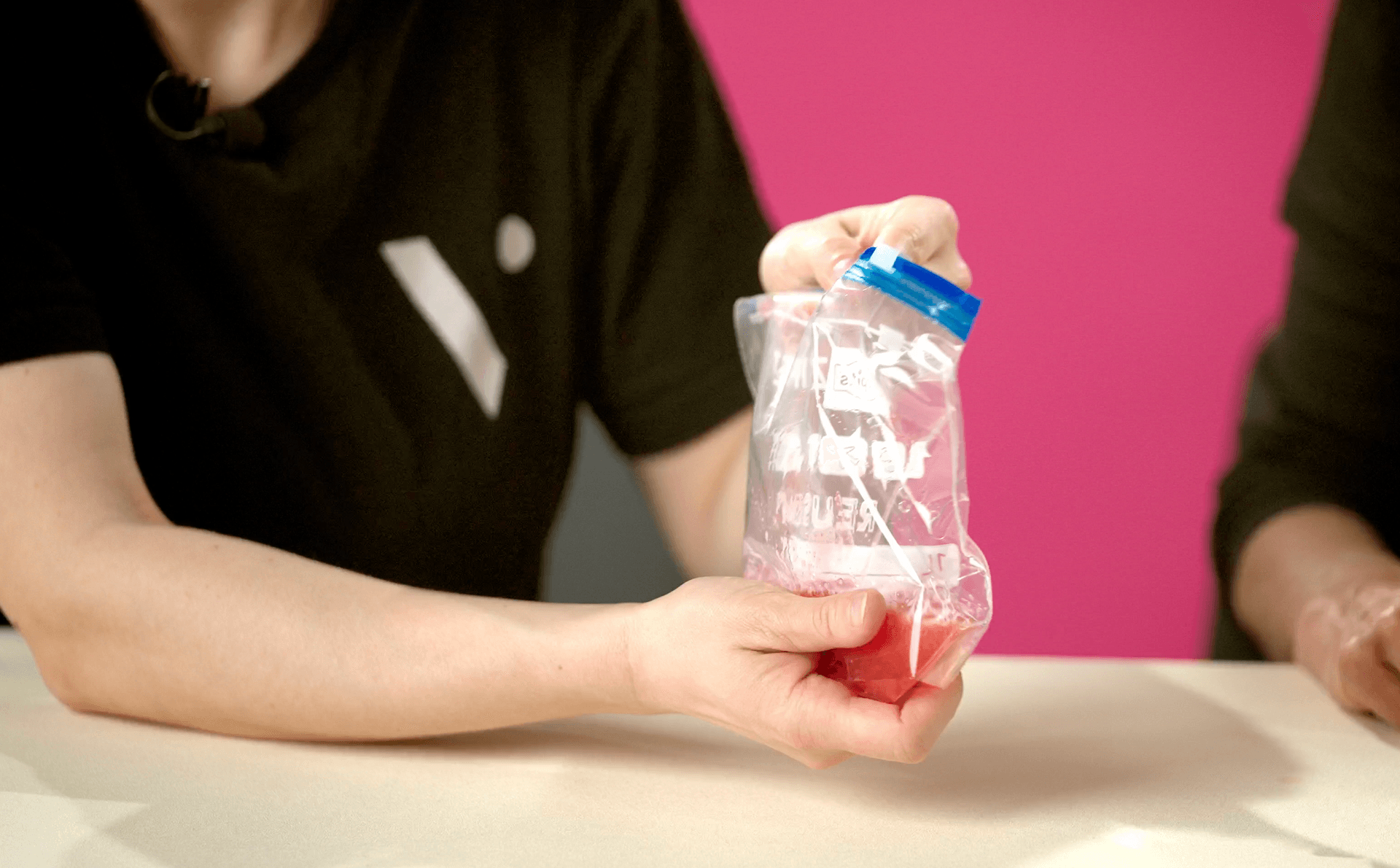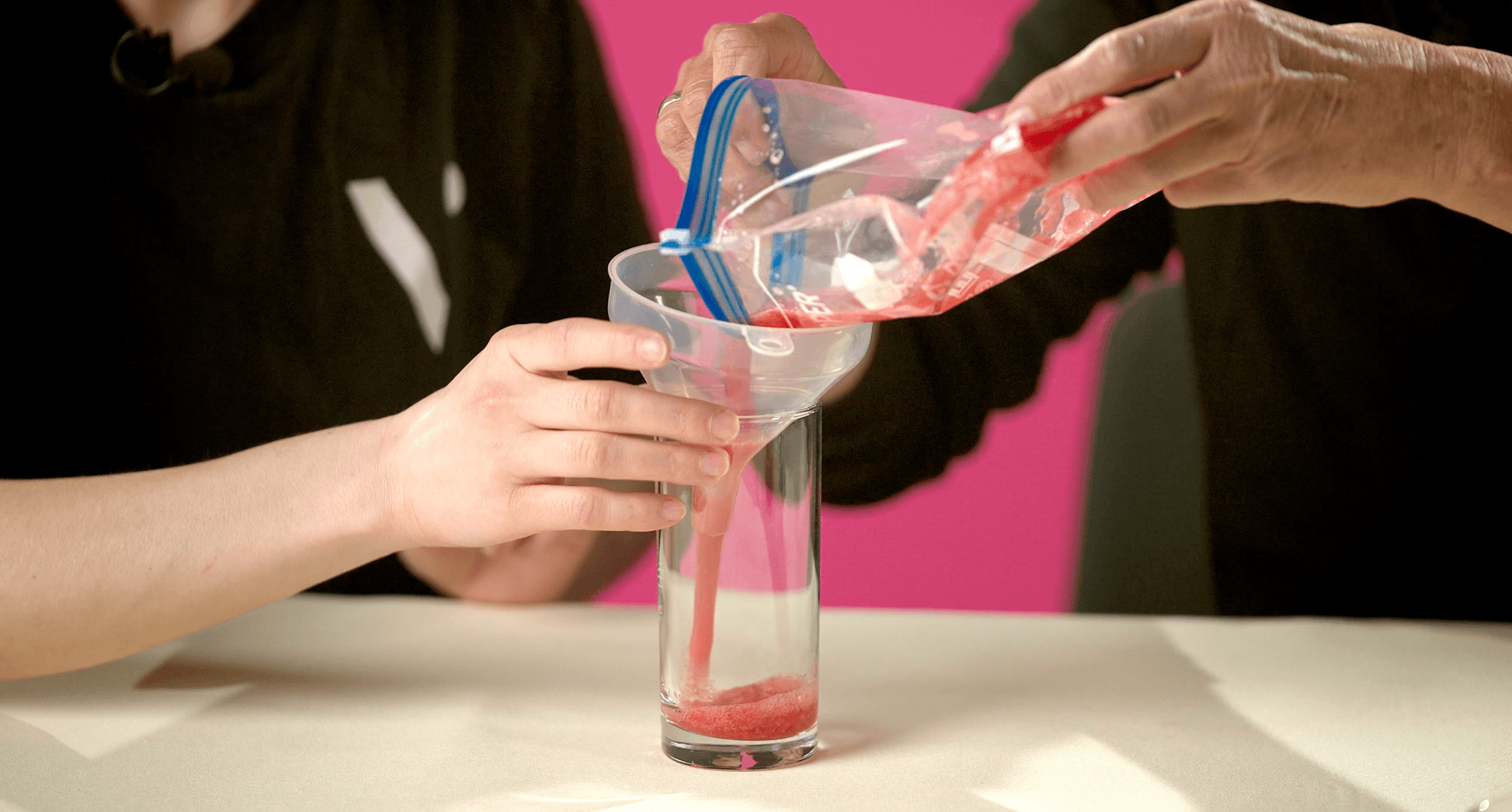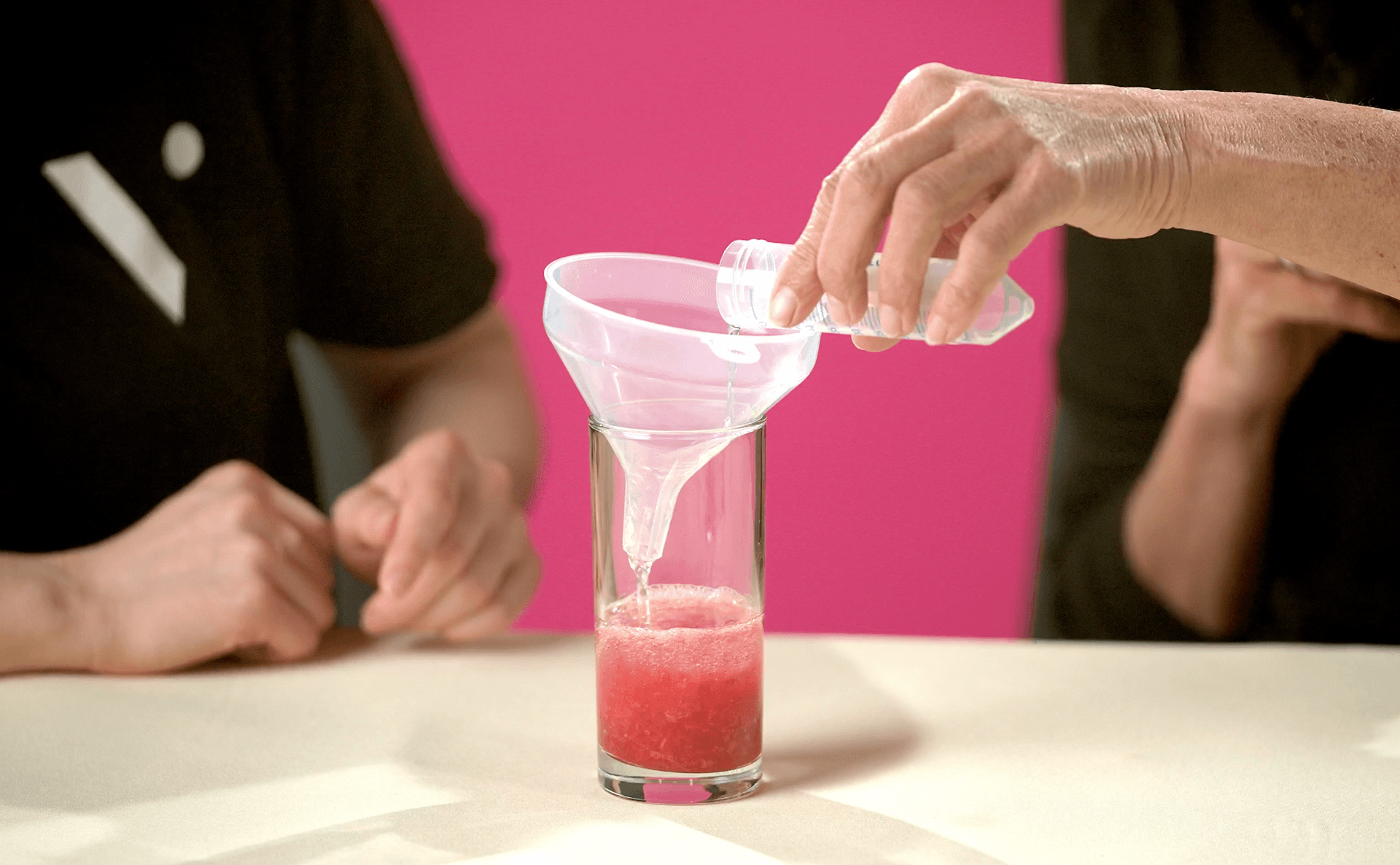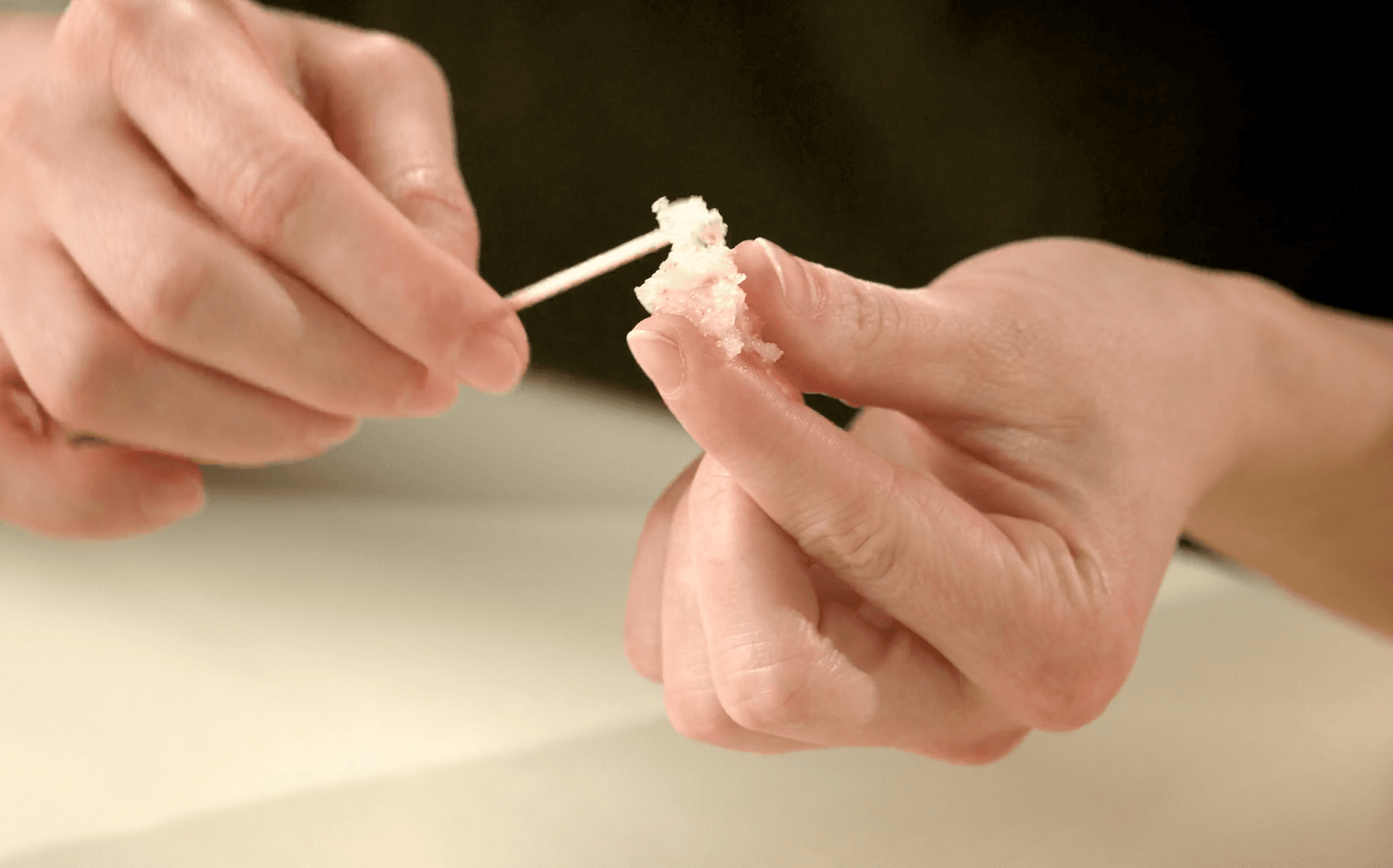Experiment
The blueprint of a strawberry
Did you know that all living things are related to each other? From the smallest algae to the largest whale, and even us humans—we are all like one big family. But why do we look much more like our parents than an elephant or a toadstool? The answer is hidden in the nucleus of every cell—there is a blueprint that determines how every living thing looks and functions.
This blueprint is called DNA (deoxyribonucleic acid), and individual pieces of it are called “genes.” Normally, you need very powerful microscopes and other laboratory equipment to see DNA. But with the right experiment, we can easily make this tiny blueprint visible at home!
How does it work?
The genes of all living beings are hidden inside their cells. These cells have a shell (membrane) made of fats. Just like when washing dishes at home, the soap in our experiment dissolves the fat and the DNA is released. DNA dissolves in water, but not in alcohol. This is why it clumps together on the surface of the alcohol to form thick white threads and becomes visible.
Did you know?
In 1953, researchers Rosalind Franklin, James Watson, and Francis Crick used X-rays to discover that DNA is stored in our cells in the form of a double spiral (double helix). It is wound so tightly that it is difficult to imagine how long it is. If unrolled, the DNA from a single cell would be about two meters long. And because our bodies consist of many trillions of cells, the total DNA of a single human being is so long that it would reach to the end of our solar system and back again!
Unlock the secret of strawberries!
You will need:
Fresh or frozen strawberries
Sealable plastic bag (Zip-Lock)
Dish soap
Water
Funnel
Transparent glass or measuring cup
Alcohol (at least 70%, e.g.,
disinfectant or methylated spirits)
Toothpick

Step 1
Put a large strawberry, half a glass of water, and a splash of dish soap into your plastic bag.

Step 2
Seal the bag, leaving a small air hole, and knead the mixture thoroughly.

Step 3
When you can no longer feel any strawberry pieces, pour the mixture into your glass using the funnel.

Step 4
Then pour about 1 cm of alcohol along the rim of the glass (ask an adult to help you!).

Step 5
Wait a few minutes without moving the glass. Observe what happens.

Step 6
If white threads have formed at the top of the liquid, remove them with a toothpick to examine them more closely and touch them (wash your hands thoroughly afterwards).
Keep exploring!
Are there other fruits or foods that can be used to make their DNA visible? Try bananas, peas, cat food... and compare the results.
What happens if you pass the strawberry mixture through a sieve or coffee filter after kneading? Does the DNA become more or less visible?
Try the experiment using warm water or chilled alcohol. Do you see any differences?
Background knowledge
We inherit our DNA from our parents, but in each generation, small changes occur in our DNA that distinguish us from our ancestors. Some of these changes help us survive or lead to more offspring, so they become more common over time. Eventually, this can even lead to the emergence of new species—this process has created the diversity of all life forms on Earth, from strawberries to elephants. Researchers call this evolution.
ISTA also conducts research on living organisms and their genes, for example in Nick Barton's group. The group wants to find out how the DNA of special flowers – snapdragons – has changed over time and how they adapt to different habitats.